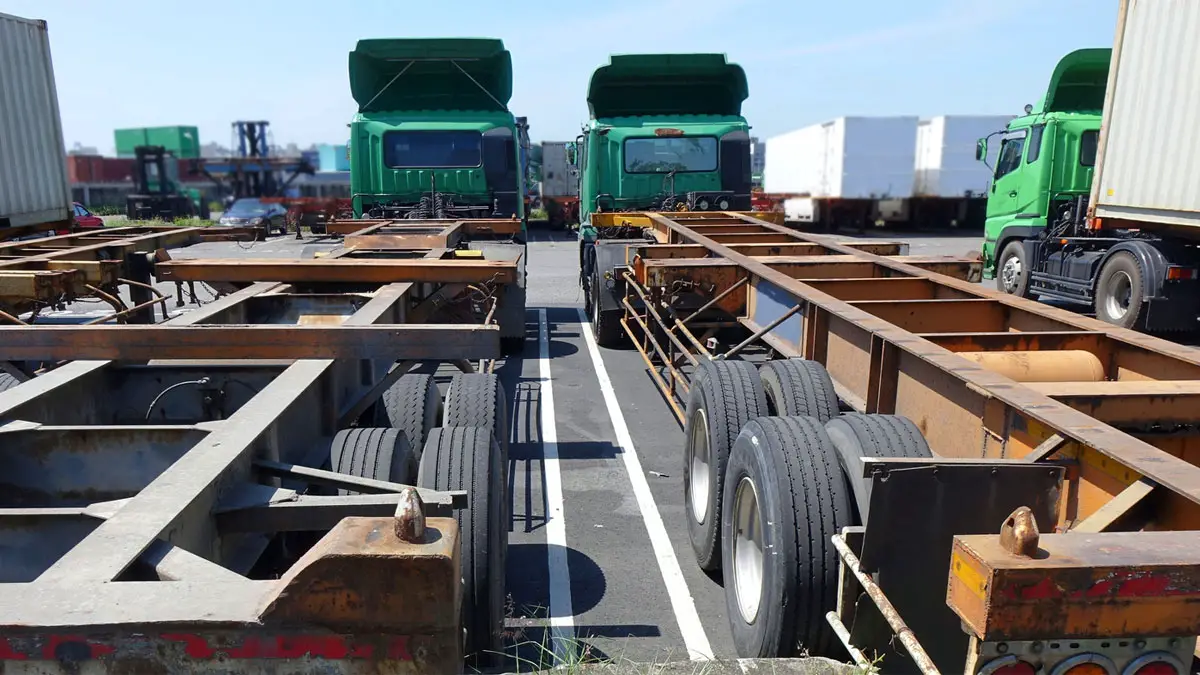Trucks have captured the imaginations of boys and girls alike since they first began populating our roadways. Today, with fuel costs skyrocketing and a decaying infrastructure, trucks are not as common a sight as they were a few scant decades ago, although they will never be fully replaced.
Alternatives, such as boats, planes, and trains can take some of the burden, but they can’t deliver the goods to businesses that are only accessible via road.
But the true claim to fame for trucks isn’t their accessibility, it’s the fact that the tractor (or cab) can be attached to a wide range of trailers. Now, we could get into all of the common types, such as car haulers and campers, but instead, here are 17 types of trailer, many of which you might never have heard of.
See Also: 7 Types of Tow Trucks
Types of Trailers
1. Boat Trailer
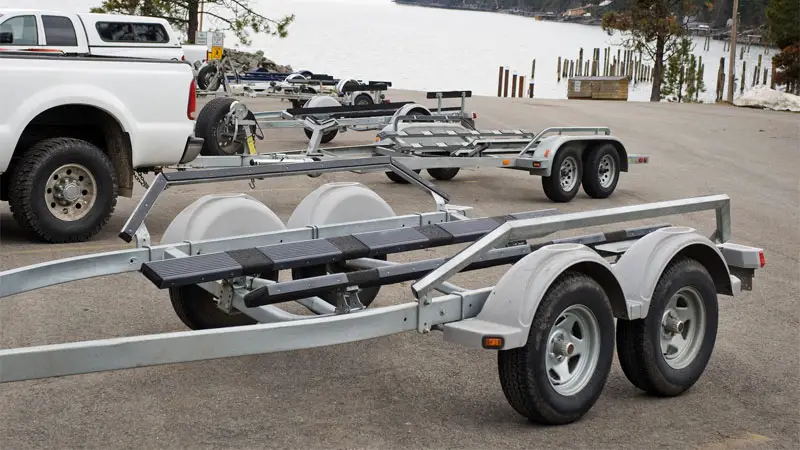
A boat trailer is an invaluable piece of equipment for any avid boater to safely and conveniently transport a boat from one location to another. This can be especially helpful when headed for a day out on the water or for storage purposes.
Boat trailers are specifically designed for the size and weight of the boat being towed, and the type of boat will dictate the type of trailer used. Many boat trailers come with features such as adjustable bunks, winches, and tongue jacks to ensure a secure and easy transport.
2. Dry Van
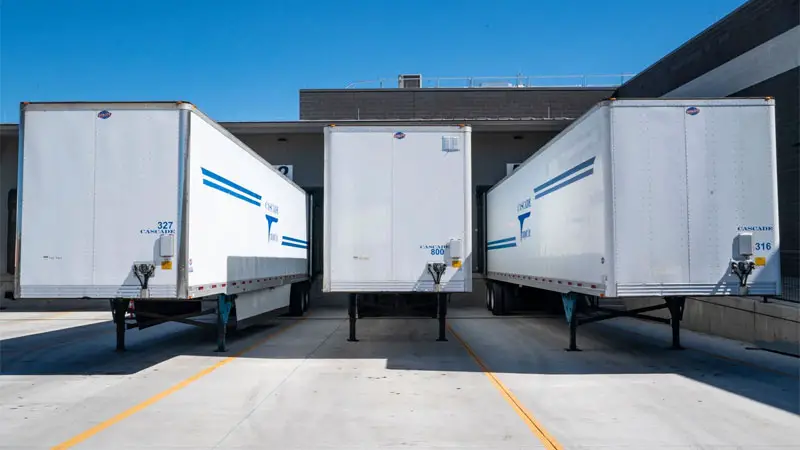
Better known as an enclosed trailer, these are extremely common on the open road. The cargo is kept in an enclosed box which provides protection from the elements and improved security. They’re far more cost-effective than most other types.
One of the greatest aspects of this trailer type is the ability to use shelving or smaller containers, permitting smaller loads or the transportation of fragile goods in a more secure manner. Measuring either 48 or 53 feet in length, the weight limit can range from 42,000 to 45,000 pounds.
It should be noted that there’s a newer type of van trailer adapted for use with multiple forms of transport. In this variation, the trailer itself is a flatbed on which are removable shipping containers.
They have the same appearance as a normal dry van trailer when the container is attached. However, when at a dock or loading station for trains and cargo ships, a crane can shift the container between these different modes of transportation, eliminating the need to load and unload.
These are obviously useful for shipping freight overseas, but also saves on both cost and fuel when used with trains. Prior to this innovation, trains would often haul the entire dry van.
3. Event Marketing Trailer
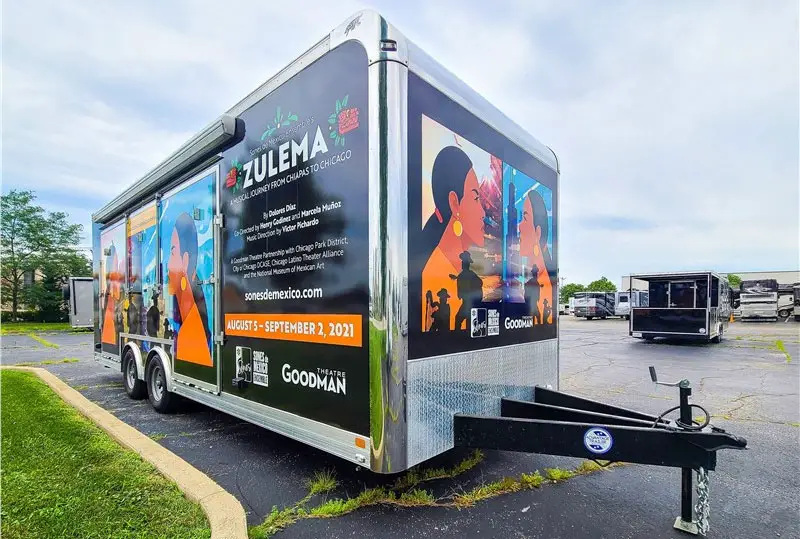
Also referred to as a display trailer, these are essentially mobile billboards. In some cases, these are flatbeds with a vertical central portion that displays ads on either side. In others, they can take on the appearance of a dry van.
In the latter case, the sides are a series of horizontal panels which simultaneously turn to change the ad being shown. These are highly effective marketing ploys that can capture the attention of a much wider audience than a stationary billboard.
4. Extendable Flatbed Trailer
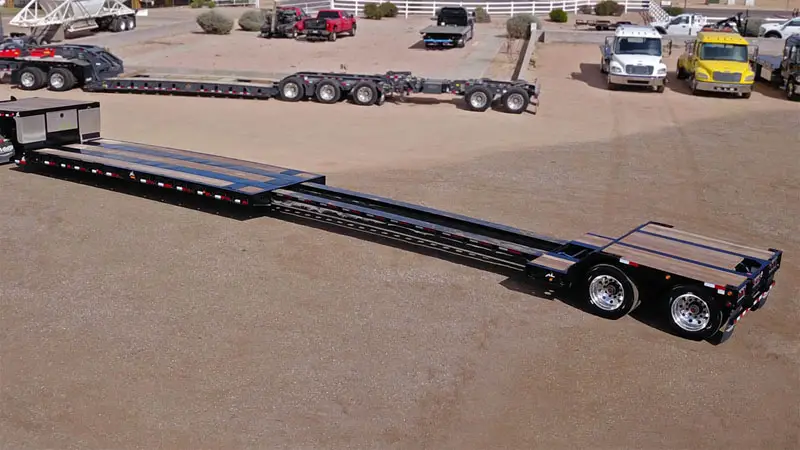
Flatbeds are extremely useful, but their size limitation can become problematic for some types of freight. That’s where the extendable flatbed trailer comes in.
This trailer is made of two sections connected by a pin. When the pin is removed, the bed can be extended. This allows a 43-foot flatbed to extend to up to 80 feet in length. The pin is then reinserted to prevent the trailer from extending or contracting during use.
5. Flatbed Trailer
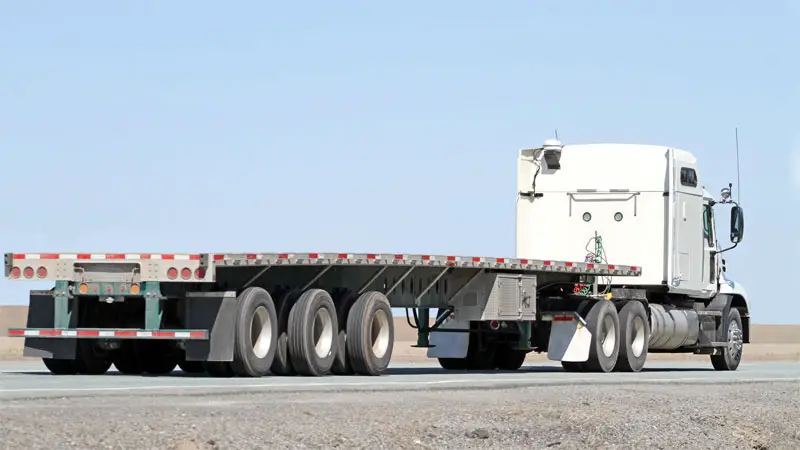
Flatbed trailers are some of the most basic and versatile types of trailers out there. They can carry up to 48,000 pounds and are open on all sides to make loading and unloading more efficient. Depending upon the cargo, the contents are loaded either by a crane, forklift, or via rampts.
Also depending on the cargo, you can choose between a length of 24, 40, 50, 48, or 53 feet with 48 feet being the standard length. Cargo is often chained down or covered by special tarps.
6. Food Service Trailer
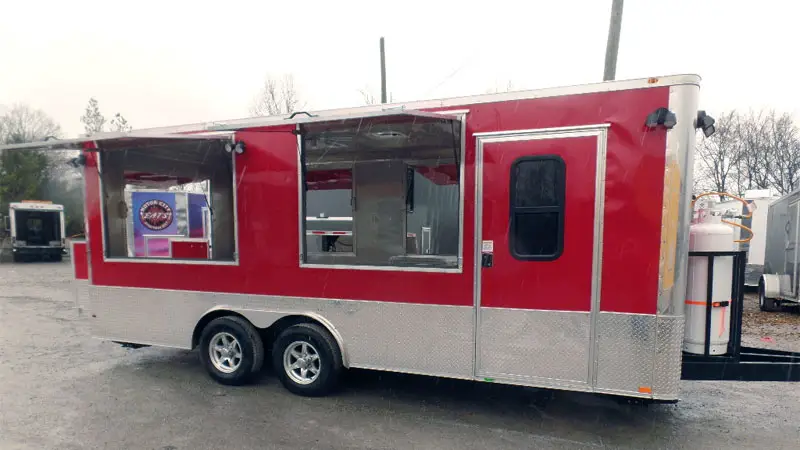
These trailers somewhat resemble a normal dry van, but are very different on the inside. Instead of hauling freight, they contain complete kitchens.
They’re often deployed at conferences, festivals, or even to disaster relief groups where it serves as a catering hub. Many major food companies also use these trailers to cater at major events.
7. Hazardous Materials Trailer
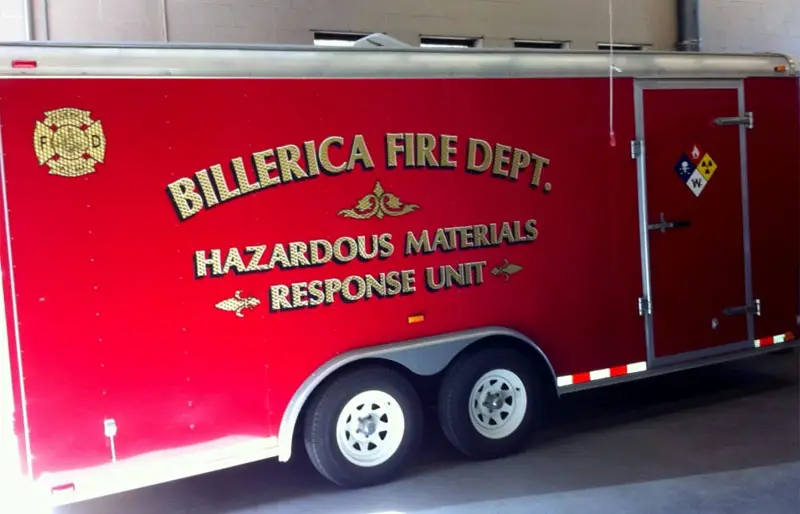
These trailers are basically large, specially insulated tanks on wheels. They’re designed to haul a variety of flammable or hazardous materials such as gasoline, oil, or chemicals.
Due to the materials they transport, these can be some of the most expensive trailers to use, requiring special permits and having heavy regulations to keep potential casualties from an accident as small as possible.
8. Lowboy Trailer
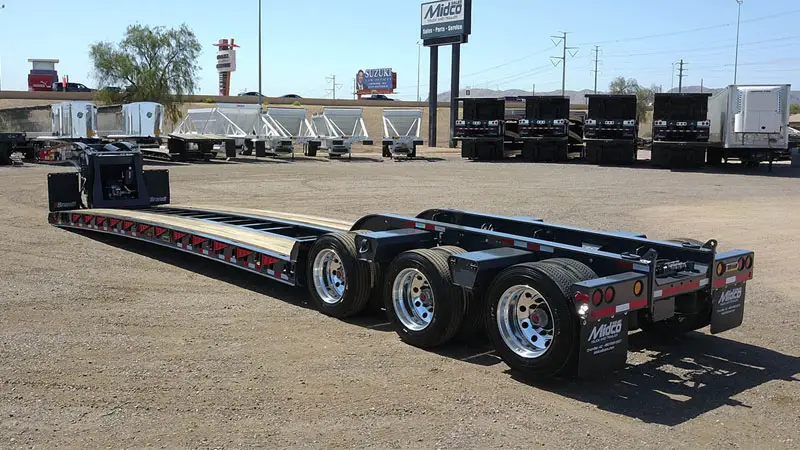
This is a specialized version of a flatbed where the bed drops between the gooseneck and wheel well. This leaves them closer to the ground, which makes weight distribution more efficient. This, in turn, allows for a greatly increased weight limit.
Two-axle lowboys can carry up to 40,000 pounds while additional axles can increase this limit up to 80,000 pounds. As these trailers are most often used for hauling heavy duty construction equipment (such as bulldozers), the width and height limits are greater than on a normal flatbed.
9. Medical Trailer
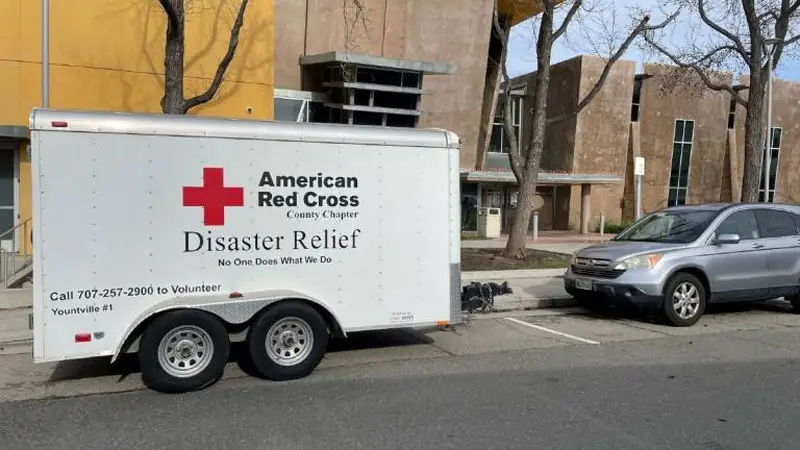
These are often essential for disaster relief and in warzones. The trailer functions as a mobile clinic and is usually better equipped for a specific role than an ambulance.
Some of the special functions of these medical trailers may include triage, mobile blood banks, and even mobile ultrasound units.
10. Refrigerator Trailer
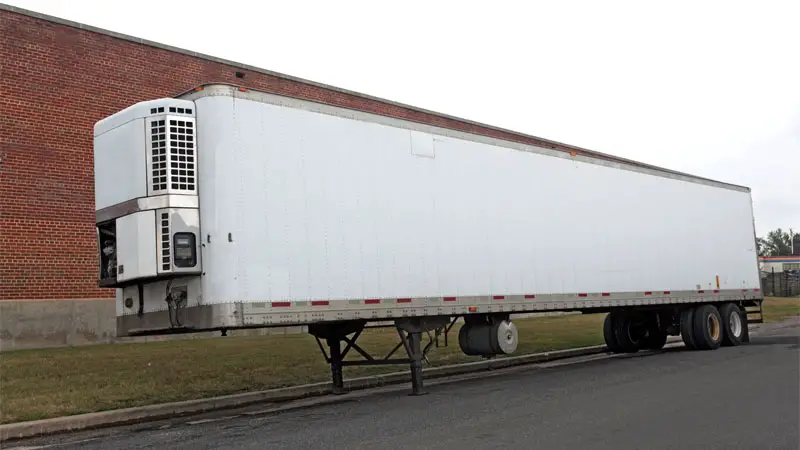
Outwardly, these look almost identical to a dry van trailer, save for the HVAC unit, called a reefer, at the front. Inside, the trailer can be kept at specific temperatures, allowing for heat-sensitive cargo such as fresh produce, pharmaceuticals, and even ice cream.
The box itself is well-insulated, while the reefer contains a compressor, condenser, and evaporator. Their height and width are a bit different than dry vans, although they share the same weight and length stats.
11. Removable Gooseneck Trailer (RGN)
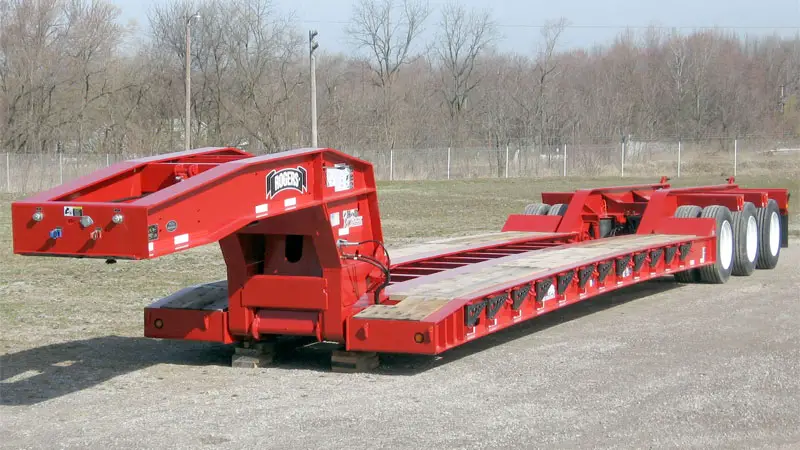
RGNs are designed to carry loads too big for most other forms of flatbed. These trailers keep the load close to the ground, removing the need for special height permits.
It’s sometimes known as a double lowboy or double drop trailer and is at its lowest between the gooseneck and wheel well. The low portion, better known as the well, is 29 feet long and is low enough that you can carry equipment up to 12 feet tall.
The higher rear deck is perfect for hauling smaller equipment, such as excavator accessories. Meanwhile, the gooseneck itself is fully detachable. This allows vehicles to drive right onto the well. The gooseneck can then be reattached.
12. Side-Kit Trailer
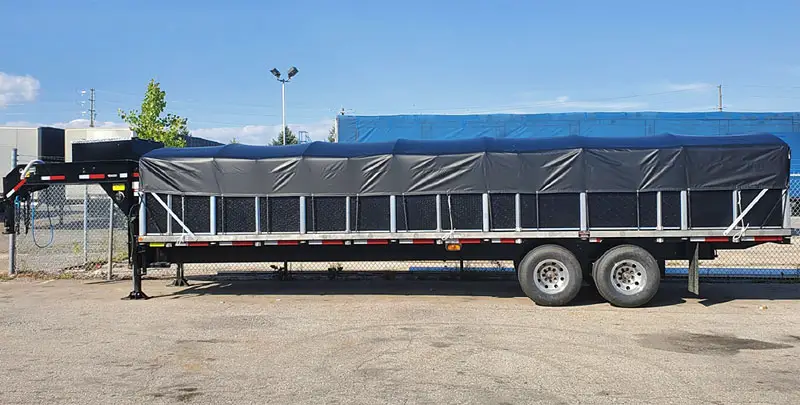
These modified flatbeds have removable sides as well as a tarp covering. Their ancestors were the covered wagons made famous in westerns.
In commercial practices, side-kits are used to transport materials that might not be able to be packed, such as coal, crops, or powders. The enclosed sides thus act like a large crate with a protective tarp covering.
Unloading is simplified, thanks to the removable side panels, and you can get a side-kit in lengths of 48 or 53 feet long. They can also carry 42,000 to 45,000 pounds.
As an interesting side-note, the US military uses a variant of the side-kit as a troop transport, with smaller flatbed trucks following the same design being popular in campaigns ranging from WWII to Korea since they could be used to carry both troops and cargo.
13. Step Deck Trailer
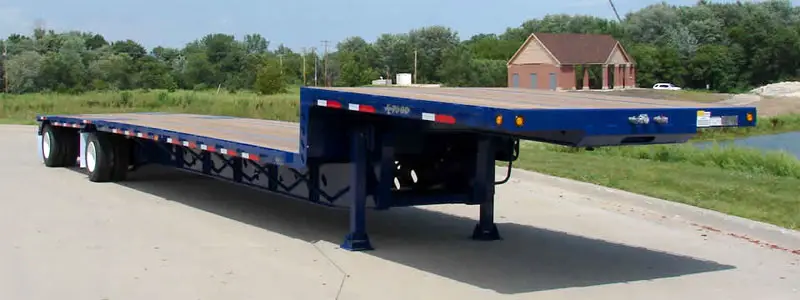
Step deck trailers are something in between a flatbed and lowboy. This allows then to carry loads slightly taller than the 8-foot limit of regular flatbeds.
Where the design veers away from other flatbed-based trailers is the presence of two deck levels. The upper and lower decks are connected by ramps to make unloading easier. It also reduces the risk of an accident when unloading via forklift due to the lower ground clearance.
14. Stretch Single Drop Deck Trailer
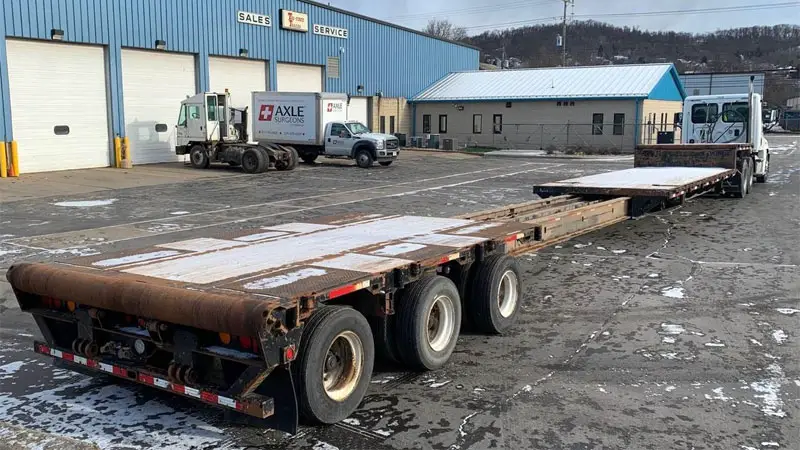
Just as the flatbed has an extendable version, so does the step deck. The lower deck on these specialty trailers can extend to stretch the trailer from 48 feet to 76 feet in length.
A stretch single drop deck trailer has only the forward section of the upper deck, which measures around 9.6 feet long. Overall, this type of trailer can haul up to 44,000 pounds of cargo.
15. Tipping Trailer
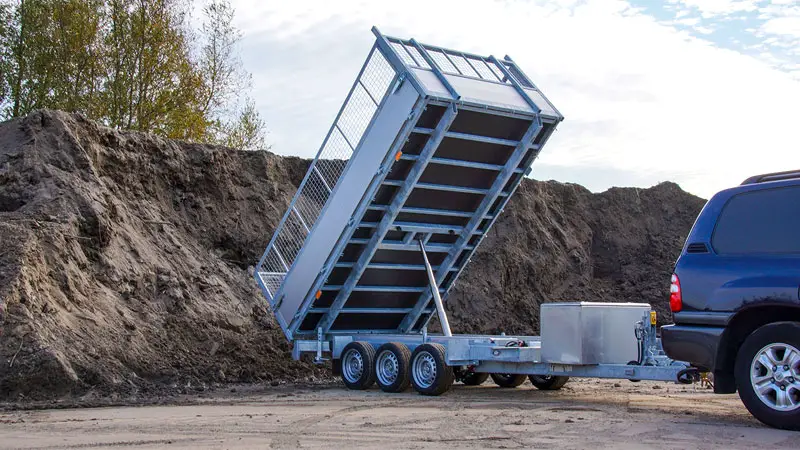
Have you ever wished you could have your own dump truck? Well the tipping trailer provides an even better option. The details vary widely from one brand to another, but the basic concept remains the same.
The bed of the trailer is attached at the back (some versions allow you to clamp from either side OR the back) and usually has removable rails or walls.
Using a similar hydraulic mechanism as a dump truck, the bed can be raised, with the connected end causing it to simultaneously tip in that direction. This makes the unloading of landscaping materials or trash quick and easy.
16. Utility Trailer
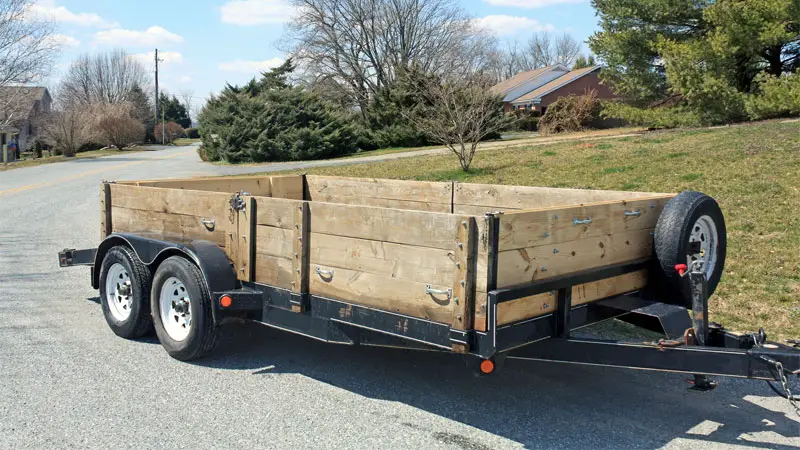
A utility trailer is a type of trailer used for transporting cargo and equipment and is designed to be towed by a vehicle such as a pickup truck or SUV.
Utility trailers can be used for a variety of tasks including hauling furniture, camping gear, landscaping equipment, and recreational vehicles.
17. Vending Trailer
Following a similar concept as the food service trailer, vending trailers provide a method of bringing a miniature version of your store to events.
When used at county fairs or other events, the vending trailer serves to not only generate income but also creates free advertising for the parent company.

